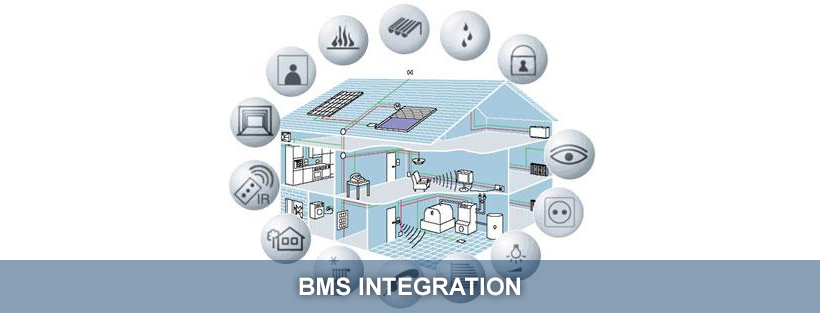
Building Management System (BMS) Integration
New builds or renovations can benefit enormoursly with The Building Management System (BMS). Utilising this system in buildings enables monitoring and controling the building’s mechanical and electrical equipment; from heating, cooling, ventilation, and lighting. When integrated with various building systems such as heating, ventilating and air conditioning (HVAC) equipment, security access control systems and lighting, the optimum in energy-efficiency and building management can be achieved. These systems typically represent 70% of a building’s energy usage.
A macro perspective of the role of a BMS system is to facilitate the operation and evaluation of a building, Comprising of sensing devices, software and microprocessor-based controllers which are used for monitoring and/or controlling equipment, systems and areas within a building helps in the control
of various building design parameters, as well as recording building operating data and commissioning other important information.
The controllers communicate with each other and provide a centralized PCbased operator interface. The range of a system can typically cover various operating aspects such as:-
- Economize usage, demanding limiting and consumption based dynamic load balancing, and indoor air quality/carbon dioxide control.
- Heating/cooling changeovers .
- Temperature settings, humidification/dehumidification .Time schedules.
- Warm -up/cool-down cycles .
- Setback controls
- Seasonal changes can be incorporated.
- Scheduling lighting from one location to another and remotely monitoring lighting’s on/off status based on room occupancy.
- Establish the right sequence for equipment start ups in order to bring a building to the correct temperature settings prior to the arrival of occupants.
- Remote monitoring of equipment from outside the facility when necessary.
Along with facilitating individual tenant billing for various services, owners achieve lower operating costs, higher property rental values ,enhanced property marketability and greater flexibility for changing their building’s usage. Cost reductions range from 8-15% for hard costs such as utilities and an additional 2-7% in soft costs (e.g., HVAC equipment, maintenance, filters, belts, etc.






